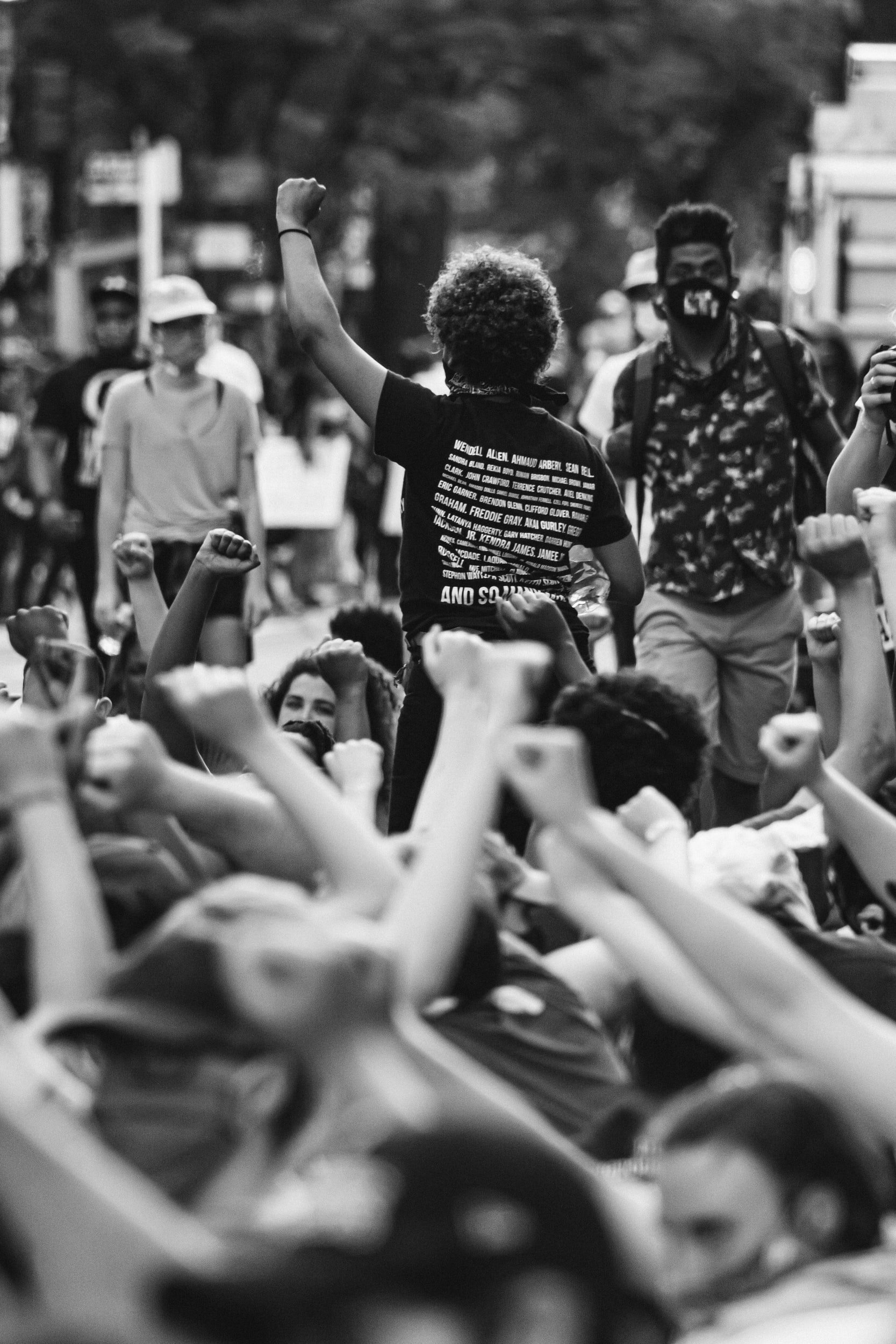EP.04/ How To Start Your Sustainable Fashion Journey
LISTEN NOW
EP.04/
How To Start Your Sustainable Fashion Journey
BLOG POST
Implementing sustainable fashion practices into your wardrobe may seem daunting when you’re starting from zero. So don’t feel defeated or expect that you should change your entire wardrobe the moment you finish reading this article.
In fact, starting your sustainable fashion journey is more than buying organic cotton T-shirts or carbon-neutral denim. Even though those are great items to buy when the time comes, the journey is not so much about shopping for something different than it is about changing your shopping behaviour.
This article will explore ways you can start your sustainable fashion journey now, with or without any previous fashion knowledge. I’ll also be sharing sustainable brands that are #NaturStyle approved, where you can shop with a clean conscience if you are on the hunt for something you need.
Let’s start!
STARTING YOUR SUSTAINABLE FASHION JOURNEY IS NOT SO MUCH ABOUT SHOPPING FOR SOMETHING DIFFERENT THAN IT IS ABOUT CHANGING YOUR SHOPPING BEHAVIOUR.
1. Care For What You Own
Did you know that how we wash our clothes is the #1 cause of microfiber pollution? Over 1.5 million microfibers are released on average per garment each time we wash our clothes - emphasis on per garment. This ends up polluting our waterways, drinking water and oceanic life like shellfish, fish, seals, whales and more. Microfiber pollution in the worst cases could also lead to reproductive problems, cancer, and even DNA damage.
So what can we do about it?
We need to start by caring for the clothes we already have, and that starts with how we wash them.
Contrary to the way a lot of us have been raised, washing your clothes frequently contributes negatively to microfiber pollution. However, not all garments are the same, and there are some that you must wash more frequently than others.
There are also different fibres that shed more than others and it’s important to be cognizant of that as well. For example, woven and high-twist fabrics shed less compared to knit and blended fabrics. For a breakdown of how often you should wash your clothes and for eco-friendly laundry tips, this article does a great job of explaining it in detail.
If you want to know which fabrics have a higher environmental footprint, check out this reel that talks about fossil-fueled fashion and shows which fabrics to avoid and which ones to look for instead in the caption.
Washing your clothes less often is a good place to start, as it will help reduce the frequency that microfibers and microplastics enter the waterways and will greatly reduce your water consumption - which is great! But it isn’t the full solution.
The most effective way you can minimize your microfiber impact is by using microfiber filters. These filters act as a barrier, retaining up to 90-95% of all microfibers produced during a wash.
Here are a few filters you can use to avoid microplastic/microfiber shedding:
Washing Bag Filter: GuppyFriend
Washer Machine Filter: Planet Care Solutions
2. Learn About The Industry
Part two of starting your sustainable fashion journey is becoming aware of how fashion works and how you can create a positive impact. I will be creating a new resource page solely dedicated to helping you learn about the industry and become educated, but until then, these are some great resources to help you get a head start.
We need people like you to learn more, ask questions and act with curiosity to remove the barriers between what really goes on in the fashion industry and what the general public knows about it.
Here are some resources for you to learn more about the industry, regardless if you're early on or already heavily invested in your fashion journey.
Study:
FutureLearn Online: These courses are anywhere between 2 - 6 weeks, they’re self-paced and provide value that will last you a lifetime.
Read:
These books will greatly expand your knowledge of the fashion supply chain, how the industry works and the ethical and environmental impacts of fashion.
Watch:
If you’re not a reader, these documentaries/videos hold a lot of information-packed knowledge about the industry’s social and environmental impacts. I highly highly recommend you watch at least one of these if not all.
The True Cost: Watch on Prime Video
Riverblue: Watch Here
The Ugly Truth About Fast Fashion: Watch on YouTube
Learn More:
If you’ve watched, read and studied all the above and you’re craving more knowledge; here are some additional resources to check out.
Sustainable Development Goals (SDGS): UN
The SDGs are a great way to learn about what we need to be working towards as a society. You can take action by asking your favourite brands what they are doing to implement these goals and why they are not working towards them already.
The contribution of washing processes of synthetic clothes to microplastic pollution
3. Support Sustainable Fashion Initiatives
The third part of starting your sustainable fashion journey is supporting those in the world trying to improve it. This can go from activists, non-profit organizations, events or donating to a cause. There is so much work that goes into educating the general public and making sustainability a reality so any kind of support (whether that be a share, like, save or donation) makes a difference.
Here are some great entrepreneurs and activists that are doing their part to change the industry and drive change - give them a follow and show your support:
Naturspired (of course I couldn’t leave us out of this list! We are starting out but we’re on a mission to create systematic change and address one of the core issues in fashion; our behaviour. Give us a follow as well!)
4. Ask Why Before You Buy
Before you go on a shopping frenzy trying to find “better” clothes, ask yourself why are you shopping in the first place. The fashion industry is the most over-consumed industry and studies tell us that we only wear a garment an average of 7 times before throwing it in the bin. So being thoughtful and intentional about what you choose to put in your wardrobe is essential.
Here are a few questions to ask yourself before you press the “add to cart” button:
Do I need this?
Does the brand show how this garment was responsibly made from an environmental and social perspective? (i.e. do they share factory audits, what type of dyes they use, do they have an anti-slavery policy etc.)
How many times will I really wear this?
Do I only want it because it’s cheap?
How long will this last in my wardrobe?
Can I repurpose or repair it at the end of life?
Can I find this secondhand first?
My main focus here is to help you make an ethical and responsible purchase decision. Of course, conscious consumption isn’t fully in the hand of the consumer - as I’ve mentioned in a previous podcast episode; branding and strategic consumer targeting have their own role in how we make our purchasing decisions. But we still have a lot of power over how we chose to spend our money and who we support with it. This is why asking these questions is so important, because it’s now easier than ever to get sucked into some green-looking scheme.
5. Who To Buy From
Okay, so we’ve reached step five. You’ve taken care of the clothes you have, you’ve supported sustainable fashion initiatives and you’ve made a personal inventory of what you need in your wardrobe - awesome! Now it’s time to find a sustainable brand that matches your values.
Here are some great brands where you can shop with a clean conscience:
(Eileen Fisher is B-Corp Certified: Check out their impact score) Eileen Fisher Renew is their circular initiative where they use returned clothes and repair them to be sold and worn again.
So there you have it!
There are 5 ways you can start your sustainable fashion journey. I truly hope this article has been helpful and you feel equipped to take action in your daily life.
If you found value or learned something in this article, please share it with your network! This helps my business in a major way and helps your network learn how to take action in the fashion industry. If you want to make a bigger contribution - donating to help make more educational content, events and campaigns would mean the world!
Until next time; see you on Instagram!





